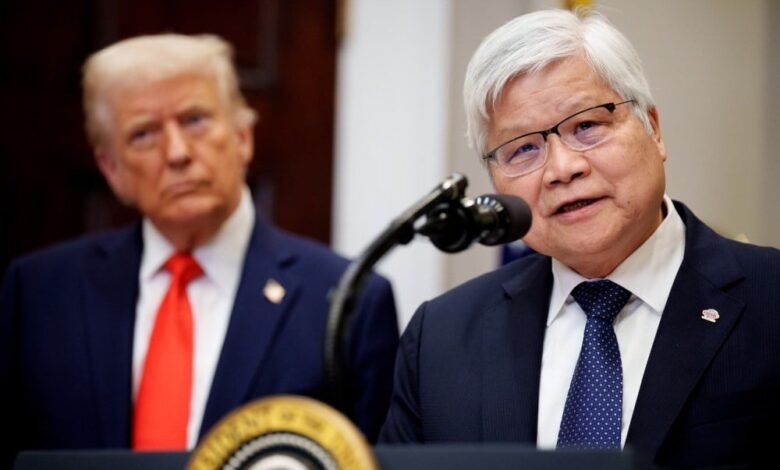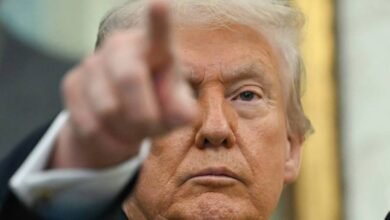The U.S. Remains Dependent on Taiwan for Semiconductor Chip Production.

The Arizona desert is now home to some of the world’s most advanced semiconductor factories, hailed as evidence that the United States has regained control of the technologies of the future. Politicians and pundits celebrated the arrival of Taiwan Semiconductor Manufacturing Company (TSMC) in Phoenix as a victory for industrial policy, and a sign that Washington can still bend globalization to its will. Scraps of tape and glowing headlines told the story of the restoration of sovereignty.
However, the recent clash with Taipei suggests otherwise. Just days ago, US Commerce Secretary Howard Lutnick demanded that Taiwan agree to split chip production 50-50, with half moving to the United States. Taiwan’s Deputy Prime Minister Cheng Liqun quickly responded, stressing that the negotiating team “never committed to splitting the chips 50-50… nor will we agree to such terms.”
The Arizona desert is now home to some of the world’s most advanced semiconductor factories, hailed as evidence that the United States has regained control of the technologies of the future. Politicians and pundits celebrated the arrival of Taiwan Semiconductor Manufacturing Company (TSMC) in Phoenix as a victory for industrial policy, and a sign that Washington can still bend globalization to its will. Scraps of tape and glowing headlines told the story of the restoration of sovereignty.
However, the recent clash with Taipei suggests otherwise. Just days ago, US Commerce Secretary Howard Lutnick demanded that Taiwan agree to split chip production 50-50, with half moving to the United States. Taiwan’s Deputy Prime Minister Cheng Liqun quickly responded, stressing that the negotiating team “never committed to splitting the chips 50-50… nor will we agree to such terms.”
The dispute coincides with trade negotiations between the United States and Taiwan that revolve around a new reciprocal tariff system. The United States has imposed 20% tariffs on many Taiwanese goods, but the White House has exempted some semiconductors from these additional tariffs. Taiwan, which in 2024 becomes the United States’ seventh-largest trading partner, is concerned that several other key sectors — including data processing equipment, electronics and machinery, which make up a large portion of Taiwan’s U.S. exports — remain weak in talks complicated by Washington’s 50-50 demand for chips.
This incident underscores that despite billions flowing into Arizona, Washington cannot dictate Taiwan’s industrial future. This reality points to a deeper paradox: that the technology oasis taking shape in the desert may be just a mirage. Far from signaling independence, TSMC’s $165 billion investment can best be understood as a hedge, or insurance policy, against unrest in the Taiwan Strait.
Since 2020, when TSMC launched its Phoenix project to please US President Donald Trump, subsidies under the CHIPS Act passed by former US President Joe Biden have fueled its expansion. Now, in his second term, Trump has hardened his rhetoric. Lutnick openly links semiconductor factories in Arizona, known as fabs, to US security commitments, rejecting the “silicon shield” theory that claims Taiwan’s dominance of chips deters Chinese attack. His logic is straightforward: If 95% of the world’s advanced chips are made in Taiwan, then those chips cannot defend Taiwan unless a significant share of them are also produced in the United States.
What began as political theater has become a showcase for its deeper logic that is less about decoupling and more about reshaping globalization. The more Arizona is viewed as evidence of independence — or at least a path to it — the more it reveals how closely intertwined the United States and Taiwan are.
The Arizona campus began as a modest institution and has grown into multiple facilities; By January 2025, the first was the production of four-nanometer chips, which then-US Commerce Secretary Gina Raimondo hailed as historic. The symbolism was powerful: for the first time in decades, the pioneering chips were being manufactured on American soil.
However, Taiwan remains TSMC’s crown jewel, with 10 factories and five back-end facilities producing most of its chips, including its most advanced designs, with 11 more planned. Arizona will eventually host six gigafactories (construction on a third began in April) — significant additions, but only a small portion of TSMC’s global capacity. The company has repeatedly stressed that its center of gravity remains in Taiwan, with US facilities intended to complement rather than replace its home base. The message is unambiguous: this is insurance, not a move of headquarters. Taipei’s rejection of the 50-50 deal confirms that its leaders view maintaining production dominance as a basic necessity for their security, not a bargaining chip that can be bartered.
The logic of insurance is practical. By diversifying production, TSMC is assuring its US customers – Apple, Nvidia and AMD – that not all chips are tied to the Taiwan Strait. It also reassures Washington. A second Trump administration can point to Arizona as evidence of the success of industrial policy. The project has made modest gains: a few Taiwanese suppliers set up locally, new training programs, and some packaging capabilities. In crises, even partial domestic production provides greater flexibility than the United States had before, which did not exist to begin with.
But tranquility is not the same as sovereignty.
The claim that Arizona represents a clean break in supply chains falters when examined closely. Arizona’s manufacturing plants still rely on Taiwanese engineers, Hsinchu-led R&D, and Asian-sourced inputs—evidence that Washington has outsourced its work inward. In Taipei, an opposition KMT lawmaker warned that US demands risked “exploiting and plundering” Taiwan’s advantages and weakening the shield that deters Beijing.
This is not self-sufficiency. It is dependency in a new form. Washington cannot claim true sovereignty when its major industrial enterprise relies so heavily on foreign knowledge and supply chains. On the other hand, China is moving faster to enhance autonomy. By blocking Nvidia’s AI chips, Beijing has forced its homegrown champions to innovate. Huawei’s Ascend kits are starting to provide alternatives, even if they’re ineffective. However, without access to UV lithography machines, China’s path to progress remains blocked.
However, the contrast is striking: while Washington celebrates symbolic decoupling, Beijing is building partial self-reliance.
What Arizona really shows is not the end of globalization, but its reinvention. Inside the factories, the equipment is Dutch, the chemicals are Japanese, the subsidies are American, and the engineers are Taiwanese. Even chips produced in Arizona are often shipped overseas for packaging so they can expand in the United States. Semiconductors remain the most globalized product of all time, and Arizona’s experience proves that borders cannot contain them.
This does not fit with the discourse of sovereignty. Billions in US subsidies flow not to Intel, but to TSMC, a foreign company whose strategic decisions will always reflect the reality of Taipei and Hsinchu. Washington is actually funding the transplantation of the Taiwanese ecosystem, in the hope that it will take root in the desert. This may sound like pragmatism — no U.S. company currently matches TSMC’s prowess — but sovereignty is difficult to regain. The recent standoff between the United States and Turkey illustrates this point: The United States cannot impose its sovereignty by fiat when the centerpiece of its strategy is unwilling to cede control.
The economy deepens the paradox. Factories manufactured in Arizona cost at least 50% more than those in Taiwan, depend on subsidies, and still rely on imported talent. Training programs are underway, but building an experience base to rival Taiwan’s will take years.
The supply chain remains fragile. Although a few Taiwanese chemical companies have opened small plants in Arizona, most critical materials still come from Asia. This cord makes Arizona manufacturing plants vulnerable to disruption or delays. Without a full supplier ecosystem, the United States’ foothold will remain shallow, supported by subsidies and political will.
Strategic risks remain more acute. In the event of a Taiwan Strait crisis, Washington may turn to Arizona as a safety net, but the net may be very weak without broad scope. In this scenario, China—forced by sanctions to accelerate domestic innovation—may be able to cope with its domestic capabilities, while the United States will still scramble. If, as Lutnick said, the United States’ ability to defend Taiwan depends on owning half of production at home, then Taipei’s refusal leaves Washington with symbolism, not sovereignty.
TSMC’s Arizona project is being celebrated as evidence that the United States is regaining sovereignty over technology that supports artificial intelligence, advanced weapons systems, and the digital economy. The deeper story is less satisfying. Arizona is insurance, not independence.
Despite its fragility, the project is not meaningless. It created political reassurance, modest industrial appeal, and the seeds of an American semiconductor workforce. However, these are fragments, not foundations. It does not reduce dependency so much as reconfigure it. Far from a disconnect, it highlights how closely intertwined the United States and Taiwan are, even as China moves closer to partial autonomy. The ignition of the dispute over the 50% to 50% division demonstrates that this entanglement is not only economic, but also political. Arizona may sparkle in the desert sun, but without Taiwan’s approval, it risks being remembered as an expensive mirage.
Don’t miss more hot News like this! Click here to discover the latest in Politics news!
2025-10-10 13:28:00




